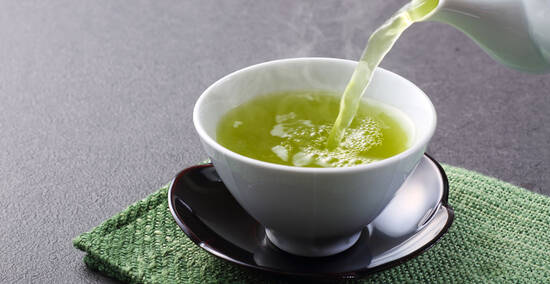Reviews On K
Very cool man! Happy to have you on the Kratom Watchdog app. I think it would be best if we created a group for your Facebook group so that your group has a place to migrate to if Facebook brings the ban hammer down.
What do you think?
CONCERNS OF HEAT AND KRATOM
Concerns of Heat and Kratom - How does heat affect kratom? It’s a question with a lot of implications for how you should use and store kratom, so it’s only natural that we should hear a lot of different versions of the question. And according to who you ask, you may get very different answers.
So, what’s the truth? Does kratom go bad in heat? Does heat activate kratom and somehow make it more effective?
In short: kratom’s alkaloids are sensitive to heat, and you should be careful not to expose them to abnormally high temperatures. Always store kratom in a cool, dry place out of direct sunlight. And if you deliberately expose your kratom to high temperatures (such as when making kratom tea), add an acid (like lemon juice) and simmer, not boil, to protect your kratom dose.
For those looking for a more in-depth guide to all things heat and kratom, read on: you’ve come to the right place.
Support American Kratom
Research on Heat and Kratom
Do a quick Google search, and you’re likely to find wildly different answers to the question of how heat affects kratom. We’re not so much a fan of opinion when it comes to questions like this, so let’s go to the actual research.
We’re currently aware of only one study on the effects of heat on kratom and its alkaloids. Published in 2020 in the Journal of Analytical Toxicology, the study looked at not only heat but also pH, which proves to be hugely useful for this discussion.
The whole article is worth a browse, but the meatiest extracts can be pulled from a table summarizing the degradation of kratom’s alkaloids at different pH’s and temps over an 8-hour period.
Notably, there are some inconsistencies in the data, and these make it clear that more research is needed. Still, these data points are the best, most reliable information we have on how temperature affects kratom, and they must be considered in any such discussion.
Whenever possible, this article’s discussion will be drawing insight from the results of said study. Tips we give are extrapolated from it and, as such, should be viewed as an educated opinion, though opinion they do remain.
Support American Kratom
Store Kratom in the Cool, Not in the Heat
Storing your kratom in a cool place is key for a couple of very important reasons: protecting your strain’s potency and preventing the growth of mold.
Kratom’s two main alkaloids, mitragynine and 7-hydroymitragynine, are both heat sensitive. Even at room temperature, they can gradually degrade and lose potency over time.
Generally, however, cold temperatures will reduce the rate at which kratom’s alkaloids degrade and will keep your supply fresher and more effective over time.
Keeping your kratom stored at room temperature (~70°F) appears to be a good spot for protecting both mitragynine and 7-hydroxymitragynine. At higher temperatures (the study’s next data point is 40°C/104°F), mitragynine is still fairly stable, but 7-hydroxymitragynine begins to degrade.
Depending on your location, the summer months may be too hot to store your kratom in just any-old-place. If you go through your supply fairly quickly, it’s unlikely to make too much of a difference — but if you want to keep your supply fresh for more than a couple of weeks, you’re best served by finding a cool place to keep your kratom.
As a bonus: storing kratom in the cool will also help prevent the growth of mold. Mold spores generally require temperatures above 70°F and high (60-70%) humidity in order to flourish. So keeping your supply in a cooler place can delay or completely prevent the growth of mold — especially if your storage space is also dry!
Support American Kratom
When Making Kratom Tea, Use an Acid to Protect Your Kratom Alkaloids
Kratom tea is one of the most popular and time-honored ways of consuming kratom. Despite its overwhelming popularity, making kratom tea can damage the potency of your dose.
Luckily, a couple of easy precautions can help insulate your alkaloids from the damage that the heat would inflict.
- Brew your tea at a simmer, not at a boil
According to the data, the temperatures required to boil water can significantly degrade kratom’s potency over time. Granted, you don’t need to brew your tea for very long, but these temperatures are still likely to have an effect. By lowering the temperature to a simmer rather than a boil, you can insulate your kratom from some of this damage, significantly reducing the degradation of 7-hydroxymitragynine during your brew.
- Use an edible acid, such as lemon juice, to lower the pH of the water you use
The data shows that moderately acidic environments actually protect kratom’s alkaloids from degradation in heat! Therefore, by adding lemon juice, apple cider vinegar, or another edible acid to the water you use, you can significantly reduce the degrading effect that temperature will have during your brew.
Support American Kratom
Kratom and Heat, In Closing
So how does heat affect kratom? In a word, badly.
Kratom’s key alkaloids are heat-sensitive, and they will degrade over time when exposed to high heat. Mitragynine is generally fairly stable and will degrade more slowly, but 7-hydroxymitragynine is far more sensitive and can meaningfully degrade at even reasonable Summer temperatures.
So what can you do to protect your stash and keep it fresh over time?
- Always store your kratom in a cool place. Temperatures under 70°F are preferable, especially for strains high in 7-hydroxymitragynine.
- When possible store your kratom in a dry place to prevent the growth of mold. That’s especially important if your storage tends to be hot, as mold spores require both heat and moisture in order to thrive.
- When making kratom tea or otherwise deliberately exposing your kratom to high heat, 1) simmer rather than boil, and 2) lower the pH of your water by adding a bit of lemon juice or other edible acid.
Despite precautions, your supply of kratom won’t last forever on the shelf. Kratom alkaloids will degrade over time, so buying from a reputable vendor that provides only the freshest kratom powder is key.
But by taking these simple precautions, you can dramatically improve the shelf life of your kratom supply and ensure that you have an effective kratom experience much more consistently.
How To Use Kratom Leaf?
Kratom is an evergreen tree indigenous to Southeast Asia. There are many ways to consume it from grinding the whole plant into fine powder to just using the leaves. However, its oldest ways of consumption include chewing the leaves or brewing them into tea. Old farmers used to chew freshly taken off leaves of the plants to increase their productivity and take a dose of energy to get going throughout the day. The tea was prepared to get relaxing effects, get a good night's sleep and relieve fatigue.
The most lovable aspect of consuming Kratom is that it offers you a lot of variety in its ways of consumption. The post discusses how you can take kratom leaves in innovatively different forms.
Chewing The Leaves
The simplest and easiest method of consuming kratom leaves is still chewing them. According to experienced consumers, it is one of the most effective ways of taking your dosage. However, a large part of the kratom community does not adopt this way because of the raw and bitter taste of the herb. When you chew the leaves, there is no way to avoid the taste. This method is also not recommended for beginners for the same reason. Due to this downside, this technique is largely reserved for experienced consumers who always like to go old-school and have no problem with the taste.
Grinding Your Leaves Into Coarse Powder To Take It With Water
You found kratom leaves at home, and you want to give it a try. What is the best method? Fortunately, if you are a new consumer with dried leaves, you can coarsely crush those leaves at home and take them by toss and wash method. In this way, you experience the taste much less than chewing. Take a small amount of crushed leaves (less than 4 grams for beginners), toss it over your tongue, and gulp a big sip of water or any fruit juice. In this way, the leaves will be washed off your tongue in no time, causing you to feel less taste.
Brew The Crushed Leaves Into Kratom Tea
One of the best ways to take powder or leaf Kratom is by making tea! You can simply turn kratom leaves into powder by putting them on your hand, placing a paper underneath, and crushing them, making sure the paper can collect the dust. Alternatively, you can use a pepper mill too. If you don't want to get into crushing, you can directly prepare tea with leaves.
With the crushed leaves, simply take 1 teaspoon for 2-4 cups of tea. Add this amount to a container such as a kettle and add warm water over it. Make sure not to pour boiling water or let the water cool for 30 seconds if boiled before pouring.
Too hot water will ultimately destroy the alkaloids, killing off any goodness that you get with the tea. After adding the water, allow it to steep for at least 5 to 10 minutes and strain before drinking. You can also add honey, sugar, cinnamon, stevia, or lemon for better flavor. After you are done adding your favorite ingredients, the tea is ready to serve!
What Are The Benefits Of Taking Kratom Tea?

While the toss and wash method feels a lot easier and more convenient, tea is a more flavorful and comfortable option. If you refrigerate it, you can go for a couple of days with the tea mixture. In addition to that, if you add a few drops of citric acid, the tea can last even longer. According to many consumers, tea is a better option for relaxing nerves, and with tea, you kill two birds with one stone. Get your recommended dosage and calming and soothing effects of warm water passing through your track, dilating your vessels.
Using kratom Leaf In Food
Though tea is indeed a more soothing way of getting your dosage, it does not save you from the bitter taste. For those who really don't like the taste of Kratom, there are other more effective ways. These may include mixing the crushed leaves with foods. The best types of food to mix your herb into are semi-solid foods, like smoothies, yogurt, and milkshakes. You could also try something like oatmeal, or even soup.
If you want to be more creative, you can add crushed leaves while baking cookies and brownies!
If you mix the food up with the Kratom, you will notice the taste much less.
What Is The Ideal Dosage For Kratom Leaf?
It is imperative to consume Kratom, whether in any form in the right proportion. What is the ideal dosage for you? The correct dosage for Kratom depends on the user's age, weight, health status, and way of consumption. Veteran users recommend starting with a lower dosage to feel its effects and gradually increasing it once comfortable. It is because the side effects hit harder when you unknowingly consume higher doses for long. On the other hand, if you take lower than the recommended dosages, your body will ultimately develop tolerance to the herb.
First-time users of this evergreen plant are recommended to use between 1-2 grams. Once your body has familiarized, you can increase the dose to about 2.5 to 4 grams.
For experienced Kratom users, a dosage in the range of 4 to 6 grams is ideal. Consistent and experienced users can take up to 10 grams, but this is not recommended. Such higher doses can cause dizziness, unconsciousness, and all forms of stomach distress. The general doses can be broken down in terms of effect as:
- 1 gram: Very mild effect
- 2-4 grams: moderate effect
- 4-6 grams: Potential effect for most users
- 10 grams: Very strong effect - not recommended because it can cause dizziness, unconsciousness, and all forms of stomach distress.
Conclusion
There can be no one best way of taking kratom leaves because it depends on what you are comfortable with. However, an important thing is always to buy quality products from trustable and reputable buyers to get the best out of your dosage.
On our website, you can find Kratom powder that is impurity-free, lab-tested, and produced with our consumers' demands in mind. With our affordable prices, high-grade products, and convenient sizing options ranging from 1oz, 5oz, and 10oz, you will not find a more convenient place to buy Kratom.




